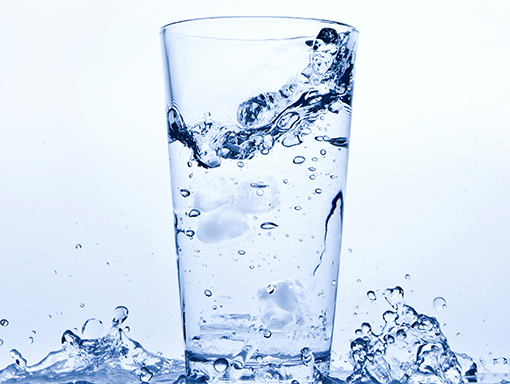The water that comes from your tap may not be truly safe to drink. Tap water can contain high chlorine levels and harmful bacteria. Even though tap water passes certain government standards, it can still have negative short-term and long-term effects on your health.
A 2018 study published by the Proceedings of the National Academy of Sciences of the United States of America confirmed there are 16 million cases of acute gastroenteritis (stomach flu) that occur every year at American community water systems. Every year, health-based drinking water quality violations affect up to 45 million people.
Water filtration is a process that removes elements like:
- Sediment, rust and silt
- Chlorine, scale and water-soluble heavy metals
- Chemicals, pesticides and herbicides
Water filtration can also help prevent algae and bacteria growth.
For truly pure water, a water purification system cleanses water by removing viruses, arsenic, dissolved solids and fluoride. You may be wondering about the benefits of water filtration versus water purification and may be wondering what is best for you and your family.
Here’s an explanation of the difference between reverse osmosis water purification and carbon filtration. Learn why combining the two is best for optimal water purification.
What is Reverse Osmosis?
Reverse osmosis is water purification using membrane technology. Water is forced over a semi-permeable membrane, and the system features several stages of purification. These include:
- A pre-filter that removes particulate and sediment
- A pre-carbon block filtration for the removal of chlorine and other chemicals
- A membrane that separates water from other harmful elements
- A post-filter that improves the taste and flavor of the water
When water is pushed against the membrane, contaminants are left behind, so the result is pure and clean drinking water. Reverse osmosis systems remove pollutants and elements like:
- Arsenic
- Bacteria
- Chlorine
- Cysts
- Dissolved solids, like calcium, magnesium and sodium
- Fluoride
- Heavy metals, including lead, iron, aluminum and cadmium
- Mercury
- Nitrates
- Organic compounds, including insecticides, herbicides and pesticides
- Parasites
- Pharmaceuticals
- Viruses
Reverse osmosis creates the purest water for drinking and cooking, removing around 97% of all water contaminants. That’s why many restaurants and businesses that need to provide pure water to customers use reverse osmosis systems.
What is Carbon Filtration?
Carbon filtration is a water filtration method that uses carbon, such as activated carbon, to remove chlorine, heavy metals and organic compounds from water. Carbon filtration alone, however, will not remove viruses, arsenic, fluoride or dissolved solids. Reverse osmosis systems have the ability to filter out much smaller elements compared to carbon filters.
Carbon filtered water is healthier than unfiltered tap water because it has removed metals, chlorine and compounds that can cause certain health issues. Carbon filters also tend to be inexpensive to purchase, install and maintain compared to more complex water purification systems.
A carbon filter alone removes approximately 10-15% of all contaminants or total dissolved solids (TDS). Reverse osmosis, on the other hand, removes 95-97% of TDS. This is why in areas with high TDS such as Phoenix, a store-bought carbon filter can’t make your tap water taste like a bottle of water. In an area of the country where TDS are not as high, a carbon filter can be effective at providing better tasting water.
Truly Pure Water
Carbon is an effective tool for removing some impurities from water. That’s why carbon filtration is often a part of a reverse osmosis system. A carbon filter in a reverse osmosis system is what removes chlorine and improves the scent and taste of water.
The membrane and multi-filter method used in a reverse osmosis system provides an enhanced solution to improve the purity of the water. Carbon filtration alone cannot prevent all harmful contaminants from making their way into your drinking or cooking water.
Double processed water ensures water is free from harmful contaminants and tastes and smells great. For someone who wants truly pure water, combining carbon filtration with reverse osmosis is the way to go.
Partner with a Water Purification Expert
Purified water removes waterborne germs that can cause sickness. You may be ingesting harmful contaminants like bacteria and viruses if you’re drinking water straight from the tap without filtering it and purifying it first.
Tri-Copy Office Equipment has water purification solutions that can keep you and your employees safe and productive. Contact us to learn about our reverse osmosis systems with carbon filtration.




